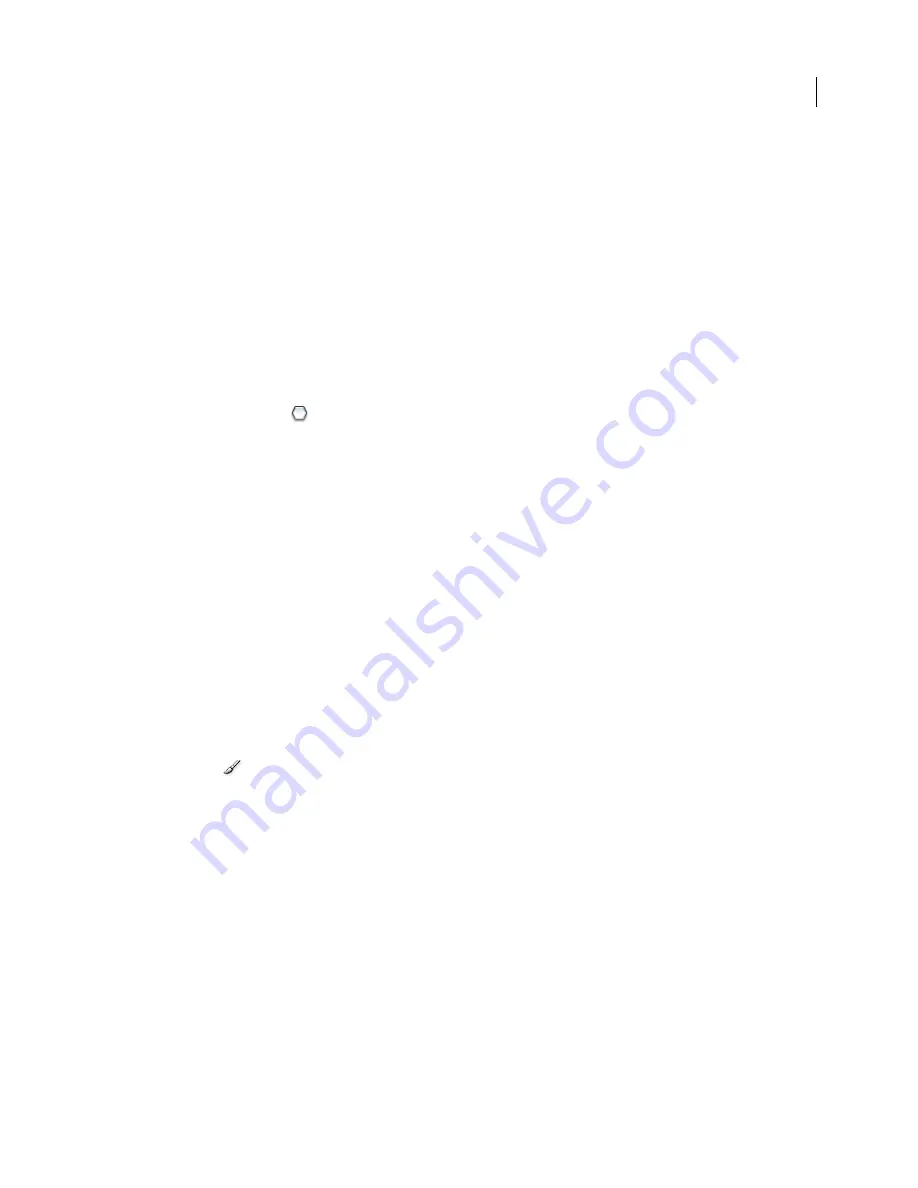
FLASH CS3
User Guide
168
4
Drag on the Stage. If you are using the Rectangle tool, press the Up Arrow and Down Arrow keys while dragging
to adjust the radius of rounded corners.
For the Oval and Rectangle tools, Shift-drag to constrain the shapes to circles and squares.
To specify a specific size of Oval or Rectangle in pixels, press the Alt key (Windows) or Option key (Macintosh) with
the Oval or Rectangle tool selected, and click the Stage to display the Oval And Rectangle Settings dialog box.
•
For ovals, specify the width and height in pixels, and whether to draw the oval from the center.
•
For rectangles, specify the width and height in pixels, the radius of the rectangle corners for rounded corners, and
whether to draw the rectangle from the center.
Draw polygons and stars
The PolyStar tool draws polygons or stars.
1
To select the PolyStar tool
from the pop-up menu, click and hold the mouse button on the Rectangle tool and drag.
2
Select Window
>
Properties > Properties and select stroke and fill attributes.
3
Click Options and do the following:
•
For Style, select Polygon or Star.
•
For Number Of Sides, enter a number between 3 and 32.
•
For Star Point Size, enter a number between 0 and 1 to specify the depth of the star points. A number closer to 0
creates deeper points (like needles). If you are drawing a polygon, leave this setting unchanged. (It does not affect
the polygon shape.)
4
Click OK.
5
Drag on the Stage.
See also
“Use the Stroke Color and Fill Color controls in the Property inspector” on page 186
Paint with the Brush tool
The Brush tool
draws brush-like strokes, as if you were painting. It creates special effects, including calligraphic
effects. Select a brush size and shape using the Brush tool modifiers.
Brush size for new strokes remains constant even when you change the magnification level for the Stage, so the same
brush size appears larger when the Stage magnification is lower. For example, suppose you set the Stage magnifi-
cation to 100% and paint with the Brush tool using the smallest brush size. Then, you change the magnification to
50% and paint again using the smallest brush size. The new stroke that you paint appears 50% thicker than the earlier
stroke. (Changing the magnification of the Stage does not change the size of existing brush strokes.)
Use an imported bitmap as a fill when painting with the Brush tool. See “Break apart groups and objects” on
page 202.
If you have a Wacom pressure-sensitive tablet connected to your computer, vary the width and angle of the brush
stroke by using the Brush tool Pressure and Tilt modifiers, and varying pressure on the stylus.
















































